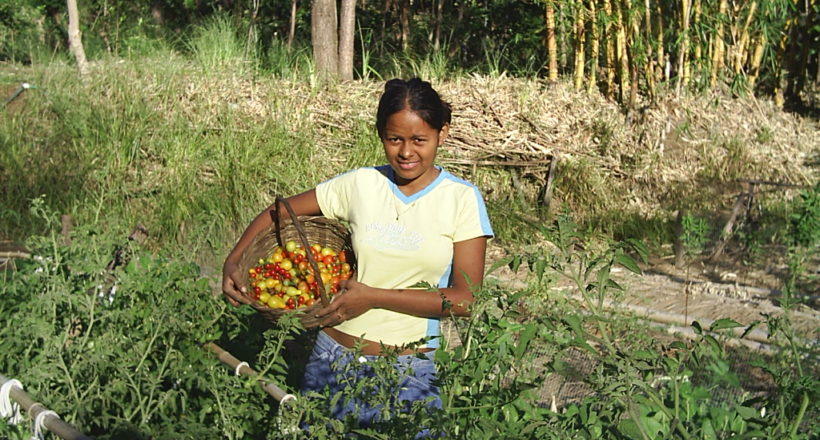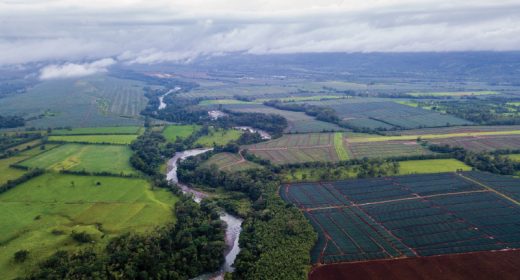
Gardening for the Future of Guanacaste
- APR 04, 2017Warning: count(): Parameter must be an array or an object that implements Countable in /home/howlermag/public_html/old/wp-content/themes/new-paper/includes/general.php on line 193

Your Lead Paragrpah goes here
[vc_row full_width=”full_width”][vc_column][vc_column_text]If you want to live a long life, grow a garden.
The best fertilizer is the footstep of the farmer. Chinese Proverbs
If irony were fertilizer I’d be knee-deep in vegetables right now–it’s like the Sahara around here in April. Nonetheless, fruitful gardening is possible here any time of year with the right irrigation.
Let’s weed out a few widespread misconceptions. Simply because the temperatures here are a bit more balmy than say, Saskatchewan, that doesn’t mean that everything is going to grow all verdant and lush ‘cause, you know, we’re in the tropics.’ Soils in Guanacaste are not the same as rich, fertile soils we may be used to. At the risk of generalizing, there are no soils on the hillsides, just a bunch of dirt, or something worse if you’re trying to plant around a newly constructed home with a view.[/vc_column_text][vc_column_text]
Growing in Guanacaste
Different people tend to have different luck with some vegetables. Keep in mind that every 100-meter rise in elevation is equivalent to 1 degree north in latitude. So, up in the hills, you can grow a lot more cold-weather-type vegetables than you can at the beach. Some hot weather cabbages do quite well around here, and even some lettuces. If you really want a certain veg in your garden, keep trying.

In the dry summers, assuming you have reliable irrigation, the best vegetables to propagate are:
- Tomatoes
- Peppers, both sweet and spicy
- Mustard greens
- Melons, including watermelons (their leaves are really susceptible to disease in the rainy season)
- Okra (classic)
- Pipian (local zucchini variety)
- String beans, especially Chinese long beans
- Eggplant
- Basil
- Cucumbers
Best rainy season vegetables include:
- Pipian
- Corn (the starchy variety, not sweet corn which is hard to come by here due to its disease susceptibility)
- String beans
- Root crops including taro and other root vegetables that look like taro
- Yucca, which will take the worst soils here
[/vc_column_text][vc_column_text]You can also grow many or even most of the dry season vegetables in the rainy season, as long as you give them ample air flow space. So, you will want to trellis your tomatoes and cucumbers in the rainy season.
Disease is more prevalent during the rainy season, so leaf crops tend to have a harder time. I usually spend the green season tending to my fruit trees instead. If you do want to grow yourself some veggies in the rain, consider the differences in areas of your yard–put your root vegetables in the more humid areas and the tomatoes and cukes in a drier spot.
In terms of planting time, as long as you’re willing to work with the challenges Mother Nature brings at certain times of year, such as too much water or not enough, you can pretty much try to grow anything at any time. Small home vegetable gardens can really be started at any time of year. I tend to watch the locals, and plant my garden when I see the neighbors planting their corn. Youtube offers countless videos on how to build various kinds of trellises and tips on composting.
Presenting another challenge, I’ve unfortunately run across a fair share of dead seeds here–I buy them in new packages, but nothing comes up. So if your Guanacaste-purchased seeds aren’t sprouting, it’s probably not your fault.
Irrigating
This year we’re supposed to be heading into an el niño year, which means more dryness than usual, so being able to irrigate despite low rainfall will help quite a bit. If you can irrigate, you can start these seeds before it starts raining–like, now.
When you water, stay away from midday. Water either early or late. Water deeply, but don’t soak the soil. If you’re sprinkling, it should fall like rain, softly without compacting and or washing away the soil. If it starts to puddle, move on and come back later. Counterintuitive as it may seem, it is as easy to kill plants by overwatering as by under watering, especially if the soil is clayey, compacted or the plants are set a bit too deeply, so watch how the plant is doing and make watering adjustments if it’s not thriving. Exactly how much water your plants will need depends on your soil characteristics.
Critter care
Many natural repellents and insecticides are available here, and we even have plants to make some of those repellents, such as using neem for an insecticide base. A tobacco solution works too.
Iguanas and other low-to-the-ground creatures like to chomp off the greenery as it shoots out, so I installed low fences that sort of work to keep them away.
The skinny on soils
 When you want your plants to flourish as you envision, you have to start with the right soil composition. Locals and local landscapers often resort to trucking in the more fertile “black soils” in the valleys, back up the hill to kick-start the process of landscaping. I would argue for incorporating some compost or other organic matter into the mix and keeping planting areas well mulched to avoid overheating of the soil in the sun. Homeowners can get a soil analysis done at CAFESA in Liberia, and you should choose samples from various sites on your property.
When you want your plants to flourish as you envision, you have to start with the right soil composition. Locals and local landscapers often resort to trucking in the more fertile “black soils” in the valleys, back up the hill to kick-start the process of landscaping. I would argue for incorporating some compost or other organic matter into the mix and keeping planting areas well mulched to avoid overheating of the soil in the sun. Homeowners can get a soil analysis done at CAFESA in Liberia, and you should choose samples from various sites on your property.
People who buy plants at the Sabado Féria in Tamarindo often ask if they are for full sun, partial sun, or what. That’s a step in the right direction. A guy just up the road from me manages to grow perfect basil plants all through the rainy season while mine are rotting away due to excess humidity. The reason? He’s planting in a raised bed, surrounded by a concrete sidewalk, on the northern side of the asphalt highway. Microclimate awareness will come in handy both around the different sides of your homes.
(Note: I’m happy to try to answer folks’ questions on Saturdays at the Tamarindo Feria.)
[/vc_column_text][/vc_column][/vc_row]









